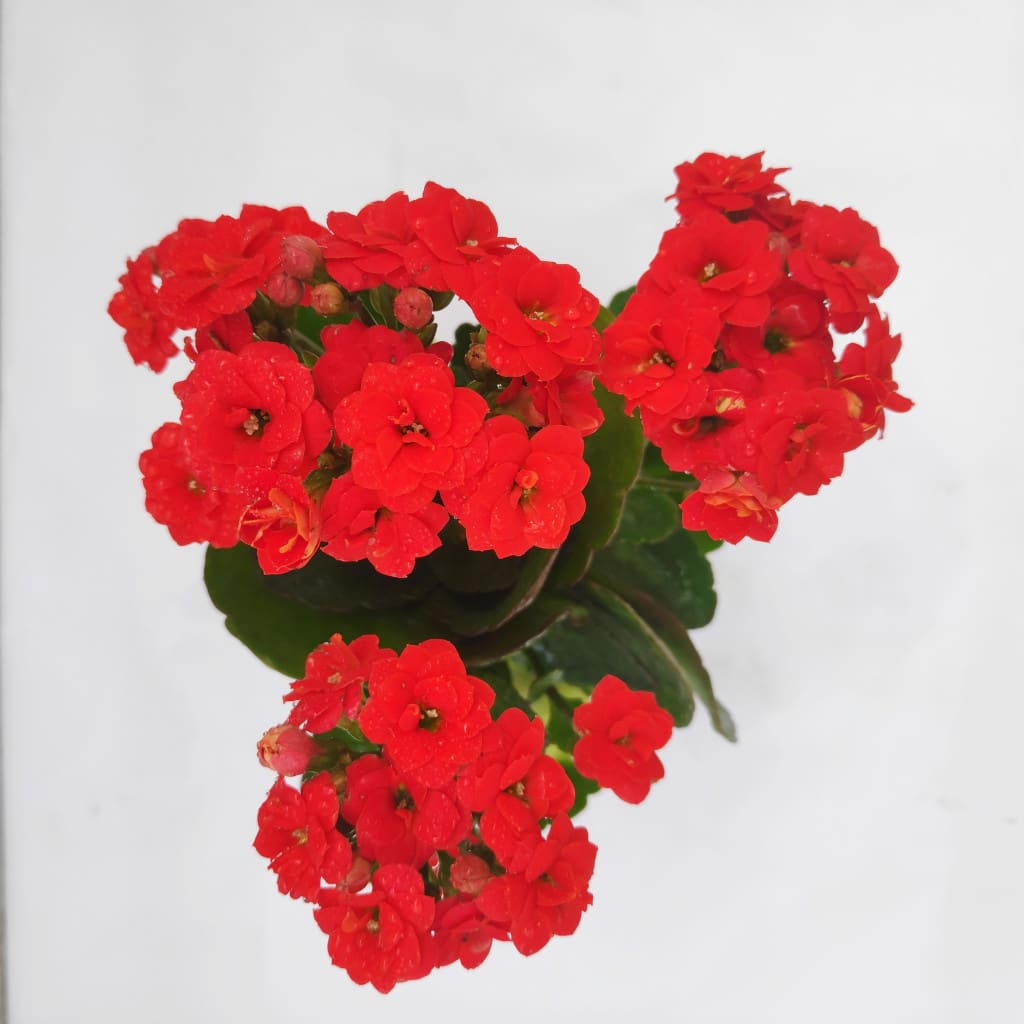How to Grow Kalanchoe
The genus Kalanchoe includes more than 100 species of plants, but only a few are regularly seen in cultivation. Kalanchoes are native to Madagasgar and thrive in arid environments, making them popular succulents. Growers are drawn to Kalanchoe for its ease of care and interesting leaves and flowers, which bloom consistently throughout the year in response to daylight. They are a slow-growing varietal, on average taking between two and five years to reach mature size. Available in pretty shades like red, pink, yellow, and white, Kalanchoe can be easily found at most grocery stores, nurseries, and florists, especially around the holidays.
| Botanial name | Kalanchoe blossfeldiana |
| Common name | Kalanchoe, Flaming katy, Panda plant, Christmas kalanchoe |
| Plant type | Succulent |
| Mature size | 12–18 in. tall, 12–18 in. wide |
| Sun exposure | Full sun, partial shade |
| Soil type | Well-drained |
| Soil pH | Acidic |
| Bloom time | Spring, summer, fall, winter |
| Flower color | Yellow, red, orange, pink, white |
| Hardiness zones | 10, 11, 12 (USDA) |
| Native area | Africa |
| Toxicity | Toxic to pets |
Kalanchoe Plant Care
If you’re looking to grow a succulent with a little extra beauty, look no further than the Kalanchoe plant. Like most succulents, Kalanchoe is a relatively hands-off varietal, preferring plenty of sunlight and well-draining soil. It’s also suited to a variety of temperatures, but will not bloom during the winter months. However, beginning in spring, you’ll be treated to bursts of colorful flowers that can last several weeks and can reoccur throughout the year, as long as the plant receives the proper light exposure and is pruned correctly between blooms by removing the flowering heads and providing minimal watering for a few weeks.
For more Information : Kalanchoe Plant
Light
Kalanchoe plants need a lot of sunlight to bloom, so they should be kept in a room with an abundance of bright, natural light. Avoid placing them on windowsills or in direct sunlight, however, as it can scorch the leaves and cause the plant not to bloom.
Soil
Kalanchoe plant will grow best in well-drained soil, so choose or create a blend that doesn’t retain too much moisture, like a 50 percent potting soil and 50 percent cactus mix or a 60 percent peat moss and 40 percent perlite mix. To ensure proper drainage and avoid an overly-moist environment, you can also plant your Kalanchoe in a clay pot, which can help wick excess water from the soil.
Water
Kalanchoe may be the perfect pick for you. If you have a habit of forgetting to water your plants every once in a while, The hearty plant does well with minimal water, requiring a complete saturation only every few weeks or so (and even less often during the winter months). Let the soil of your Kalanchoe dry out completely in between waterings (this helps to prevent root rot), then water to the point of saturation. If you’re not sure if the soil is adequately dry (and therefore, ready to be watered), simply stick your finger into the first few inches—if you feel any moisture at all, check back again in a few days. Because the Kalanchoe is a succulent, its leaves are actually capable of storing water, so even if you time your watering a few days late, the plant will be just fine.
Temperature and Humidity
Kalanchoe plant is not picky and does not require certain moisture levels in the air. Generally, your plant will thrive at temperatures ranging from 55–80 degrees Fahrenheit—meaning, with the exception of not letting the plant freeze, you don’t have to do much to create the proper indoor environment. When it comes to humidity, Environment is important to the Kalanchoe, though it’s not as picky other indoor houseplants.
Kalanchoe can benefit from fertilizer. Like most flowering plants, This is especially important around the time of bloom, so feed with a well-balanced fertilizer blend once a month during the spring and summer months. If you’re struggling to help your plant achieve its flowering potential, look for a fertilizer blend that includes potassium, which can help it produce added buds next time it blooms.
Propagating Kalanchoe
Kalanchoe is very simple to propagate. To do so, cut a segment of stem several inches long from a mature plant. Allow it to dry out for a few days, or until the end appears to have “healed” shut. Then, plant in soil comprised of the same mixture (above) used to grow the mother plant. Let sit (do not water) and the stem should take root within a month.
Please Note
This product will be hand delivered to your doorstep.
The image is for reference only.
Please take out the plant from the box immediately after receiving and water it as required.
Water the soil, not the leaves and flowers.
Keep it away from direct sunlight.
Avoid placing plants in trouble spots, such as near heat or air conditioning ducts.
From enisarg.com






There are no reviews yet.